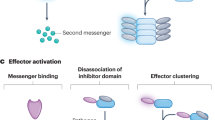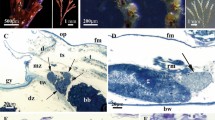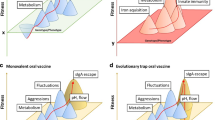Abstract
THERE is increasing evidence that inducible immunity may be demonstrated in several invertebrate species using appropriate methods. The bactericidal system1,2 seems to occupy an important position in the phylogenetic emergence of inducible immunity. Such responses and others have been reviewed recently2,3.
This is a preview of subscription content, access via your institution
Access options
Subscribe to this journal
Receive 51 print issues and online access
$199.00 per year
only $3.90 per issue
Buy this article
- Purchase on SpringerLink
- Instant access to full article PDF
Prices may be subject to local taxes which are calculated during checkout
Similar content being viewed by others
References
Evans, E. E., Painter, B., Evans, M. L., Weinheimer, P., and Acton, R. T., Proc. Soc. Exp. Biol., 128, 394 (1968).
Bang, F. B., Fed. Proc., 26, 1680 (1967).
Chadwick, J. S., Fed. Proc., 26, 1675 (1967).
Bang, F. B., J. Immunol., 96, 960 (1966).
Cushing, J. E., McNeely, J. L., and Tripp, M. R., J. Invert. Pathol. (in the press).
Schwab, G. E., and Reeves, P. R., J. Bact., 91, 106 (1966).
Author information
Authors and Affiliations
Rights and permissions
About this article
Cite this article
EVANS, E., WEINHEIMER, P., ACTON, R. et al. Induced Bactericidal Response in a Sipunculid Worm. Nature 222, 695 (1969). https://doi.org/10.1038/222695a0
Received:
Revised:
Issue date:
DOI: https://doi.org/10.1038/222695a0
This article is cited by
-
Phylogeny of immunity: An overview
Immunogenetics (1976)
-
An attempt to immunize the blue crab,callinectes sapidus, with vertebrate red blood cells
Experientia (1973)



